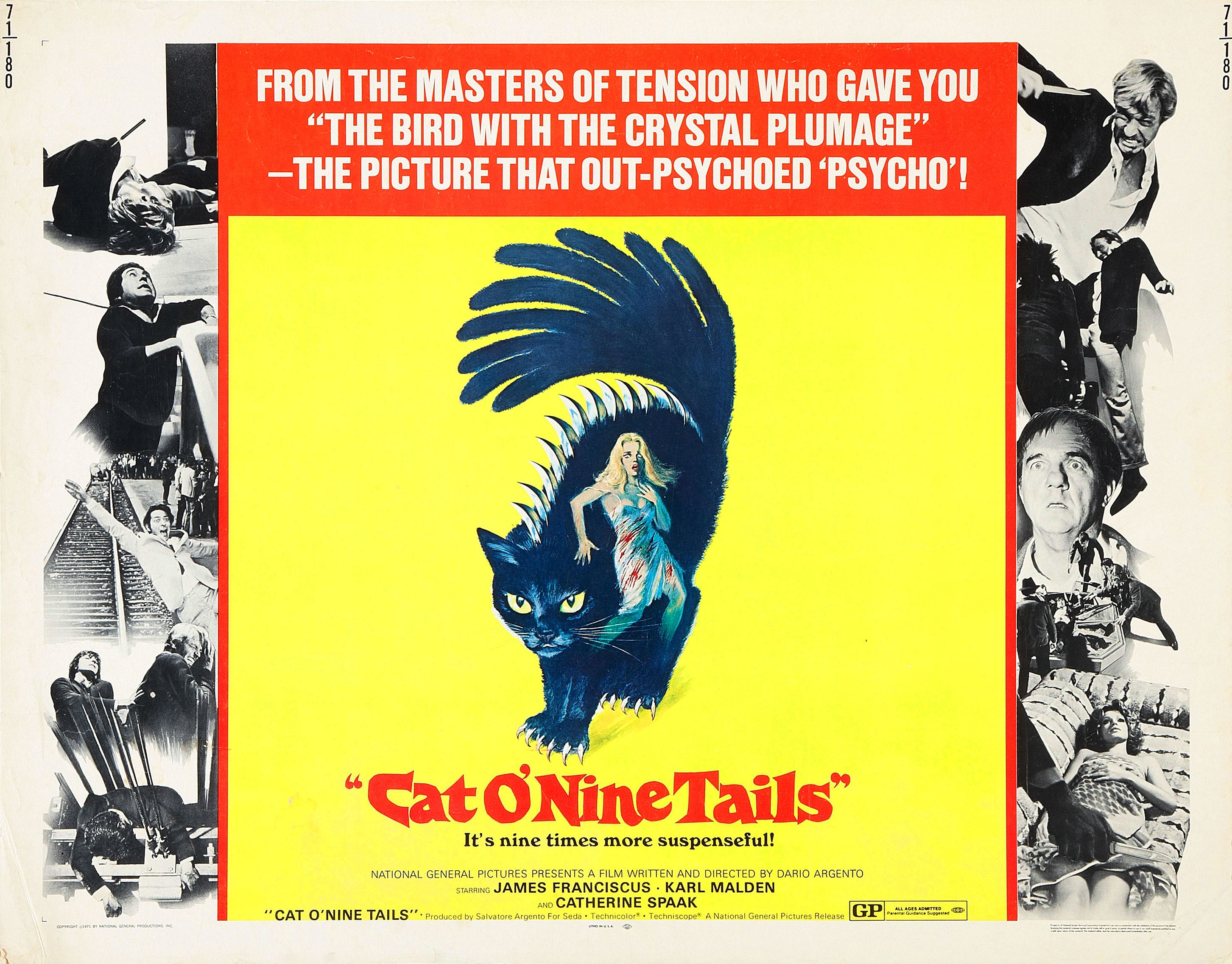
The Cat o’ Nine Tails
Written and Directed by Dario Argento from a story by Argento, Luigi Collo and Dardano Sacchetti
Starring James Franciscus (Carlo Giordani), Karl Malden (Franco “Cookie” Arno), and Catherine Spaak (Anna Terzi)
In Dario Argento’s second film (and second giallo), The Cat o’ Nine Tails, someone seriously injures a security guard in order to break into a genetics laboratory. Although nothing appears to have been taken, the intruder proceeds to kill a string of people to cover his crime. What could he have done that calls for such drastic action?
This time around, the American actors (but not characters?) on the case are a reporter named Giordani (played by James Franciscus) and a blind man who used to be a newspaper man himself (Karl Malden). His name is Arno, but his adopted “niece” and seeing-eye girl calls him Cookie.
Arno is a witness of sorts because he overheard two people talking outside the facility before the break-in. This is not the only time in the movie that his perception is key. Where “Bird” was concerned with memory, “Cat” is all about perception.
The killer is only seen in over-the-shoulder establishing shots and as a first person camera until the end of the movie. The first person shots are odd (but probably more convincing) in that we never see the killer’s hands- even when his victims are slapped or strangled. This avoids the awkwardness of staging the scene around the actual camera, but also makes it one of the few Argento films to not feature the trademark Black Gloves.
The mystery plot is a good one and hinges on a little pop science MacGuffin. The first person murders are well-done, but (perhaps because of technical restrictions), the killer literally doesn’t get as hands-on as you’d expect. Garotting, even when taken to a bloody degree, isn’t as visceral as a direct strangulation.
Besides the stalking scenes, we have other suspenseful set pieces as our reporters dig themselves into dangerous situations. These include a poisonous milk delivery and an ill-advised mission to recover some lost evidence. If those both sound more interesting than the murders themselves, it’s because they are.
In this story the characters of Giordani and Arno get more screen time and have more interaction than the leads in giallio often do. Probably a wise choice given that they’re solid performances by good actors. We have fewer other interesting characters, though. Arno’s niece, Lori, is well used and well played. The only color from the cops is that one is obsessed with recipes. Most of the lab researchers/suspects don’t distinguish themselves much either.
There is an extended scene in a gay bar (decorated with psychedelic pictures of the Beatles) to supply a little “perversion” and provide at least one character’s motivation, but compared to many other films of the era, this one has a much less sleazy vibe.
The discovery and reveal of the killer is straightforward but leads to more of a chase than we’d expect. This is another place where the movie seems to channel American cop shows more than it should, though it does provide scenes to use in a trailer (as does a car chase earlier in the picture).
Overall, The Cat o’ Nine Tails is a good effort, but comes off a bit sterile for either a giallo or an Argento movie. I suppose that could be a good thing for some viewers, but I like ’em more when they’re darker and sleazier than this.

